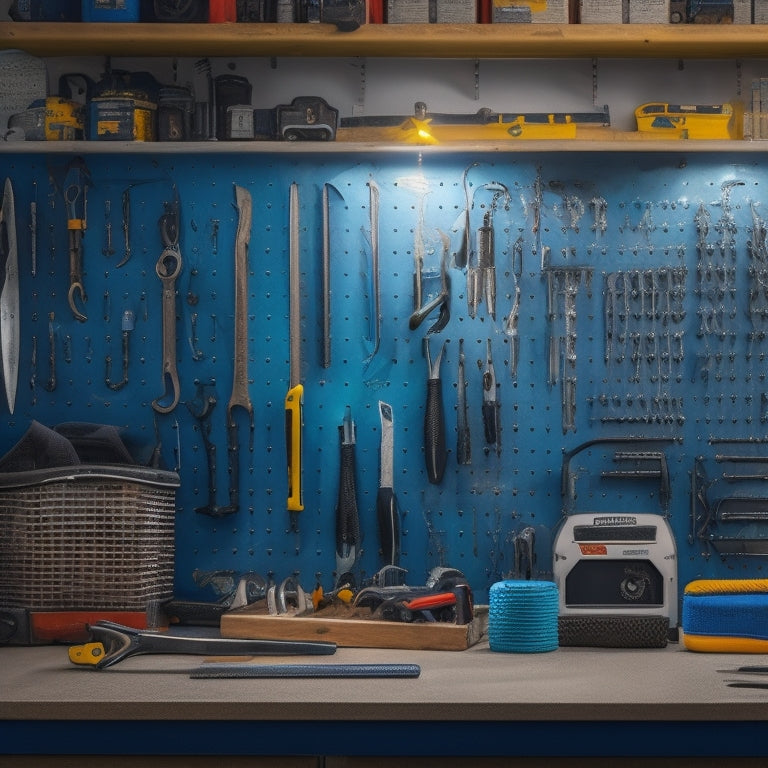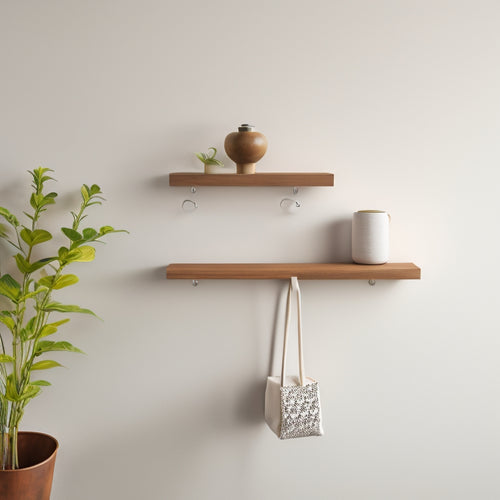
Pegboard Trimming Tips and Techniques Unveiled
Share
Pegboard trimming requires a combination of proper tools, precise techniques, and attention to detail to achieve clean cuts and efficient storage solutions. Essential tools include circular saws, jigsaws, and hacksaws, along with a clamp and scrap wood for guided cutting. Mastering the cutting process involves confirming proper alignment, using high-tooth-count blades, and maintaining a firm grip on the saw. Safety precautions, such as wearing goggles and a dust mask, are also vital. By following these tips and techniques, you can harness the full potential of pegboard trimming and discover innovative solutions for maximizing storage capacity and efficient organization.
Key Takeaways
• Use a high-tooth-count blade to minimize splintering and ensure precise cuts when trimming pegboard.
• Confirm proper alignment of the saw with the cutting line to avoid errors and inaccuracies.
• Maintain a firm grip on the saw and keep hands away from the blade to ensure safety and control.
• Wear safety goggles and a dust mask to protect yourself from debris and dust generated during the trimming process.
• Measure accurately and clamp the pegboard to scrap wood to prevent movement and ensure clean, accurate cuts.
Essential Cutting Tools and Materials
When it comes to cutting pegboard, having the right tools and materials is essential to achieving accurate and clean cuts. Saw selection is vital for cutting precision, with options including circular saws, jigsaws, and hacksaws. A clamp and scrap wood for guiding the saw are also necessary for ensuring straight cuts.
Safety precautions are paramount, and measuring accuracy is critical to avoid errors. To prevent splintering, cut with the finished side down and use masking or painters tape on the cut line. A high-tooth count blade is ideal for compressed paper, and a bench saw with a plywood blade can provide precise cuts.
Mastering the Cutting Process
To achieve precise cuts and minimize errors, it is crucial to develop a consistent cutting technique that incorporates careful planning, precise measurement, and deliberate saw control. This guarantees cutting accuracy and reduces the risk of mistakes.
-
Confirm the saw is properly aligned with the cutting line to prevent deviations.
-
Use a high-tooth-count blade to minimize splintering and tearing.
-
Always maintain a firm grip on the saw and keep your hands away from the blade.
-
Wear safety goggles and a dust mask to protect yourself from debris.
-
Keep the work area clean and clutter-free to prevent accidents and ensure a smooth cutting process.
Organization and Storage Solutions
How can pegboard be optimized to maximize storage capacity and keep tools organized in limited spaces, such as closets and garages?
By implementing creative display and space optimization techniques, pegboard can be transformed into a highly efficient storage solution.
Consider mounting pegboard on closet doors or walls to create vertical storage solutions, maximizing space in tight areas.
Utilize pegboard for tool storage, keeping frequently used items easily accessible.
A well-organized pegboard system enables quick identification and retrieval of tools, increasing productivity and reducing clutter.
Frequently Asked Questions
Can I Use a Router to Trim Pegboard for a Decorative Edge?
When trimming pegboard for a decorative edge, consider using a router with specialized router bits designed for edge profiles, ensuring precise control and a polished finish, ideal for creating unique and visually appealing designs.
How Do I Prevent the Pegboard From Chipping During the Cutting Process?
To prevent pegboard chipping during cutting, employ precise pegboard handling and a deliberate cutting strategy. Apply masking tape along the cut line, cutting with the finished side down, and using a high-tooth-count blade to minimize chip-out and guarantee a clean edge.
Are There Any Specific Pegboard Types Better Suited for Cutting and Trimming?
When it comes to cutting and trimming, certain pegboard materials excel. Look for high-density, resin-impregnated pegboards or those with a phenolic coating for improved durability and resistance to chipping. Custom designs can also be tailored to specific cutting needs, ensuring best results.
Can I Cut Pegboard With a Handheld Power Saw or Miter Saw?
When cutting pegboard with a handheld power saw or miter saw, prioritize saw safety and cutting precision by maintaining a stable workpiece, using a high-tooth-count blade, and optimizing saw speed to guarantee clean, accurate cuts.
What Is the Recommended Thickness for Pegboard Used in Tool Organization Systems?
Like a master chef selecting the finest ingredients, choosing the most essential pegboard thickness is vital. For tool organization systems, a pegboard with a density of 0.5-0.7 mm and material selection of high-density fiberboard or medium-density fiberboard is recommended for durability and functionality.
Related Posts
-

What to Look for in a Pegboard Tool Storage Kit
When shopping for a pegboard tool storage kit, you need a system that combines customized organization, sturdy durabi...
-

Wall Mounted Hooks With Shelf for Maximum Storage
You'll find that wall mounted hooks with a shelf are a revolutionary solution for maximizing storage in your home, pr...
-

Custom Pegboard Storage for Your Workshop
You're looking to create a custom pegboard storage system that maximizes your workshop's space, enhances productivity...


